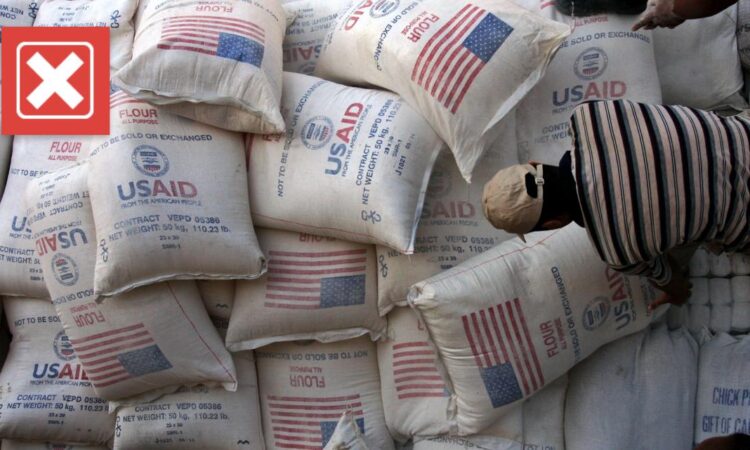
It’s a common misperception that foreign aid makes up about 25% of the U.S. federal budget each fiscal year. It’s actually around 1%.
The United States is the largest foreign aid donor in the world, allotting billions of dollars in economic, humanitarian, or military assistance to other countries each year.
Ukraine has become the top recipient of U.S. foreign aid since Russia’s invasion in February 2022, according to the Council on Foreign Relations. Israel, which is currently in a monthslong war with Hamas in the Gaza Strip, is the second largest recipient.
But as the 2024 presidential election approaches, multiple people on social media claim the U.S. is sending too much taxpayer money to foreign countries like Ukraine and Israel.
Many Americans believe that about 25% of the federal budget goes to foreign aid each fiscal year based on previous opinion polling by KFF.
One VERIFY reader wants to know if that percentage is accurate.
THE QUESTION
Does 25% of the U.S. federal budget go to foreign aid each fiscal year?
THE SOURCES
THE ANSWER

No, 25% of the U.S. federal budget does not go to foreign aid each fiscal year. It’s actually around 1%.
WHAT WE FOUND
It’s a common misperception that U.S. foreign aid makes up about 25% of the federal budget each fiscal year. The total U.S. federal budget is $6.1 trillion, and in fiscal year 2022, the U.S. sent $70.4 billion in foreign aid. That is 1% of the total budget.
“This share is consistent with trends over the past 20 years, with foreign aid obligations averaging less than 2% of total federal spending,” the Committee for a Responsible Federal Budget says on its website.
Foreign aid is the money, services or physical goods that a country sends to another to help it in some way, according to the Council on Foreign Relations. It might be used to support the recipient country’s economic growth, strengthen its social programs, respond to a crisis or improve its defense capabilities.
The Council on Foreign Relations says that the current foreign aid system in the U.S. was created by the 1961 Foreign Assistance Act, which attempted to streamline the U.S. government’s efforts to provide assistance around the world. The law defines aid as “the unilateral transfers of U.S. resources by the U.S. government to or for the benefit of foreign entities.”
Most foreign aid programs are funded through discretionary spending, primarily through the State-Foreign Operations appropriations bill and through various other appropriations bills, such as the Financial Services, Agriculture, Interior-Environment, and Energy-Water appropriations bills, according to the Committee for a Responsible Federal Budget.
The foreign aid budget is typically split into four major categories:
- Humanitarian assistance (25%)
- Health programs (21%)
- Peace and security assistance (18%)
- Economic development assistance (18%)
The Committee for a Responsible Federal Budget says the remaining 18% covers multi-sector assistance, program support, initiatives promoting democracy, human rights, and governance, education and social services support, and environmental protection programs.






